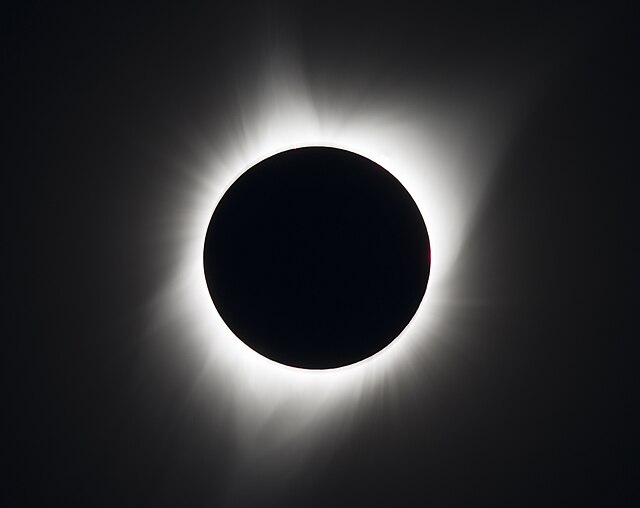A solar flare is a relatively intense, localized emission of electromagnetic radiation in the Sun's atmosphere. Flares occur in active regions and are often, but not always, accompanied by coronal mass ejections, solar particle events, and other eruptive solar phenomena. The occurrence of solar flares varies with the 11-year solar cycle.
An X5.4-class solar flare causing blooming, vertical streaking, and diffraction patterns to form in the image taken by the 131 Å (13.1 nm) sensor aboard the Solar Dynamics Observatory on 6 March 2012
An X3.2-class solar flare observed in different wavelengths. Clockwise from top left: 304, 335, 131, and 193 Å
Richard Carrington's sketch of the first recorded solar flare (A and B mark the initial bright points which moved over the course of five minutes to C and D before disappearing)
Space weather—March 2012.
The Sun is the star at the center of the Solar System. It is a massive, hot ball of plasma, inflated and heated by energy produced by nuclear fusion reactions in its core. Part of this energy is emitted from its surface as visible light, ultraviolet, and infrared radiation, providing most of the energy for life on Earth. The Sun has been an object of veneration in many cultures. It has been a central subject for astronomical research since antiquity.
The Sun, filmed through a clear solar filter
High-resolution image of the Sun's surface taken by the Daniel K. Inouye Solar Telescope (DKIST)
The Sun's transition region taken by Hinode's Solar Optical Telescope
During a solar eclipse the solar corona can be seen with the naked eye during totality.








